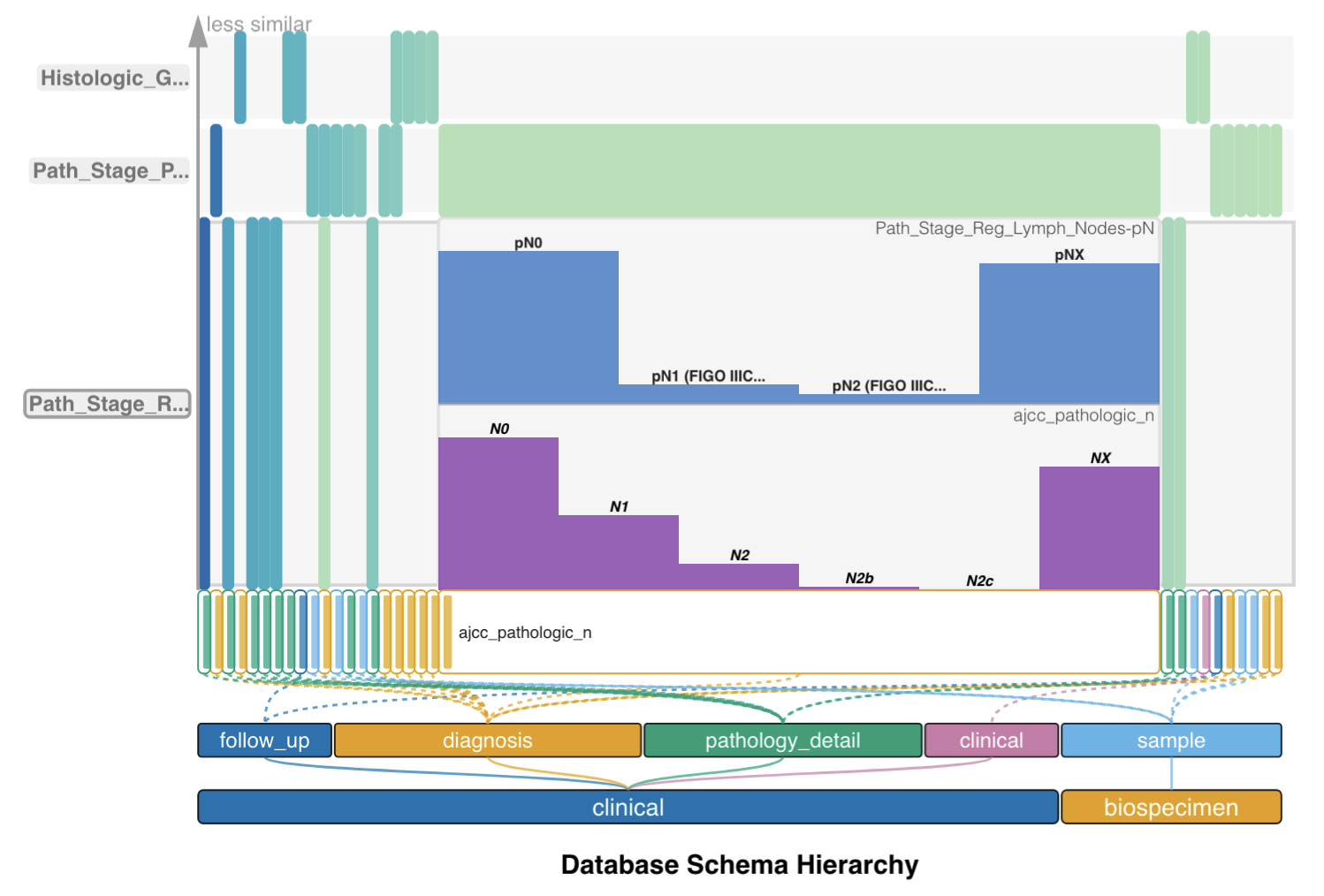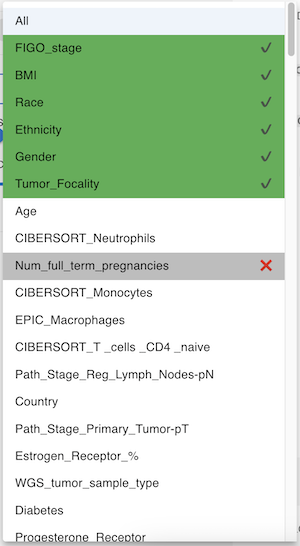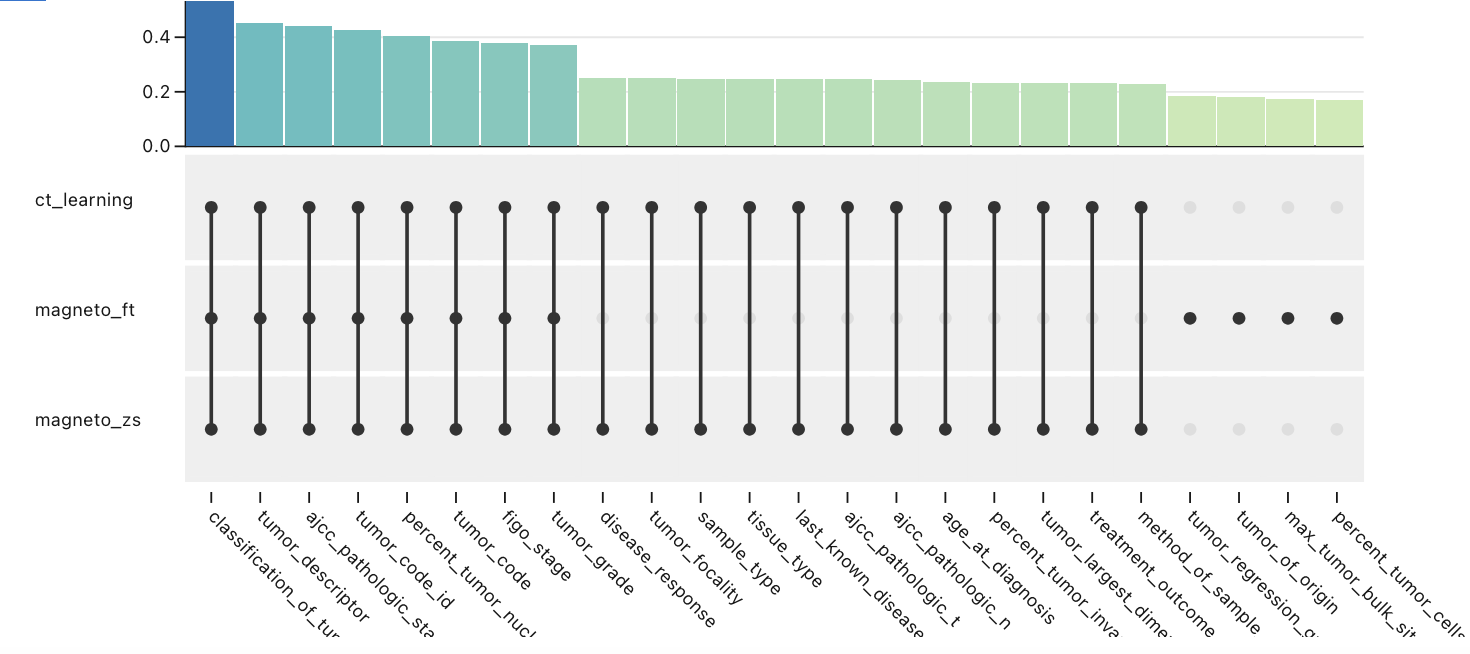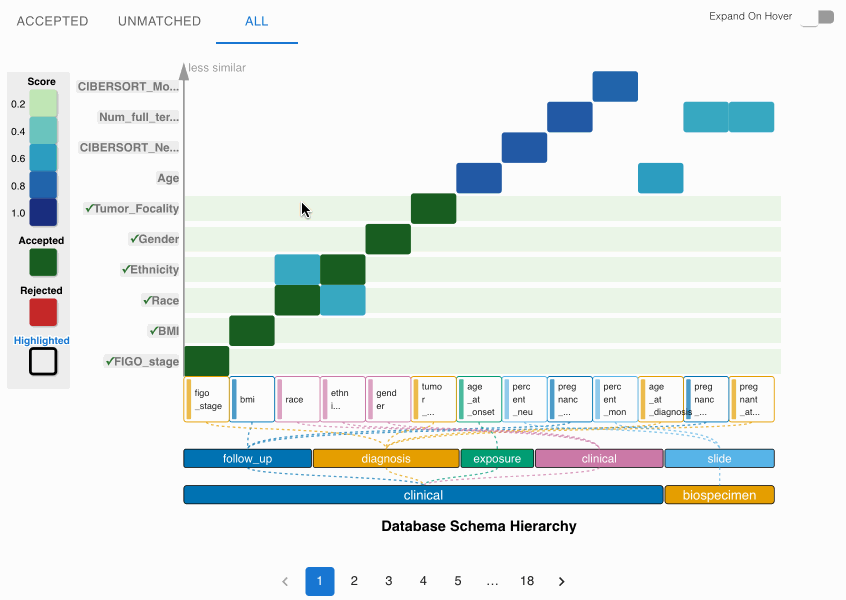After uploading your files, BDIViz launches its main interface, allowing you to visually explore match candidates between your source dataset and the target schema.
The heatmap is the primary visualization tool in BDIViz. Each cell represents a match candidate between a source attribute (y-axis) and a target attribute (x-axis).
Each cell corresponds to a potential match:
- Color intensity indicates similarity score (darker = stronger match).
- Green = accepted match, Red = rejected match.
- Click on a cell to inspect match details.

The x-axis displays the target schema’s structure as a semantic hierarchy:
- Category Level: e.g.,
clinical, biospecimen - Node Level: e.g.,
diagnosis, treatment - Leaf Nodes: individual target attributes
Color and curved connectors help clarify relationships and improve navigation.
Clicking a heatmap node reveals a stacked histogram panel:
- Top Chart: Source column value distribution
- Bottom Chart: Target column value distribution
Use this to evaluate whether the two columns share meaningful overlap.
Tip: Similar distributions (e.g., shared categories like “Male” and “Female”) often suggest semantic alignment.


The top-level filter tabs help narrow your focus:
- All: View all candidate matches
- Accepted: Only show confirmed matches
- Unmatched: Only show source columns with no confirmed match
- Expand on Hover: Toggle whether expanded histograms appear on hover or click
Select a specific source column to examine.

Dropdown key:
- Green: Already matched
- Grey: Manually discarded
- All: Show all source attributes

Set a minimum similarity score for visible candidates. Range: 0.0 – 1.0.
0.0: Show all matches1.0: Show only perfect matches
Controls how many similar source attributes appear on the heatmap when a single source column is selected.
Note: Only applies when Source Attribute ≠ “All”.
Quickly locate and highlight target attributes by name or keyword.

Visualizes string-based fuzzy matching between source and target values.
- Each row: one source value + its closest matches
- Use to validate whether mapping is semantically and syntactically justified

Visualizes how different matchers contributed to the candidate match score.
- Each row: a matcher
- Each column: a candidate
- Dots indicate support from that matcher







